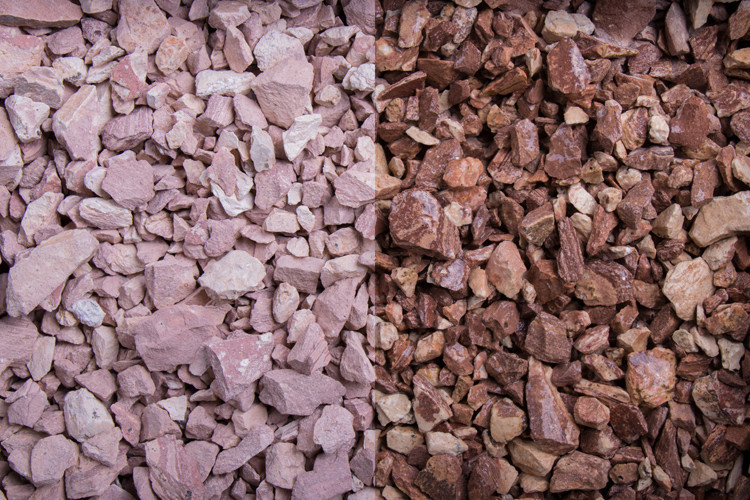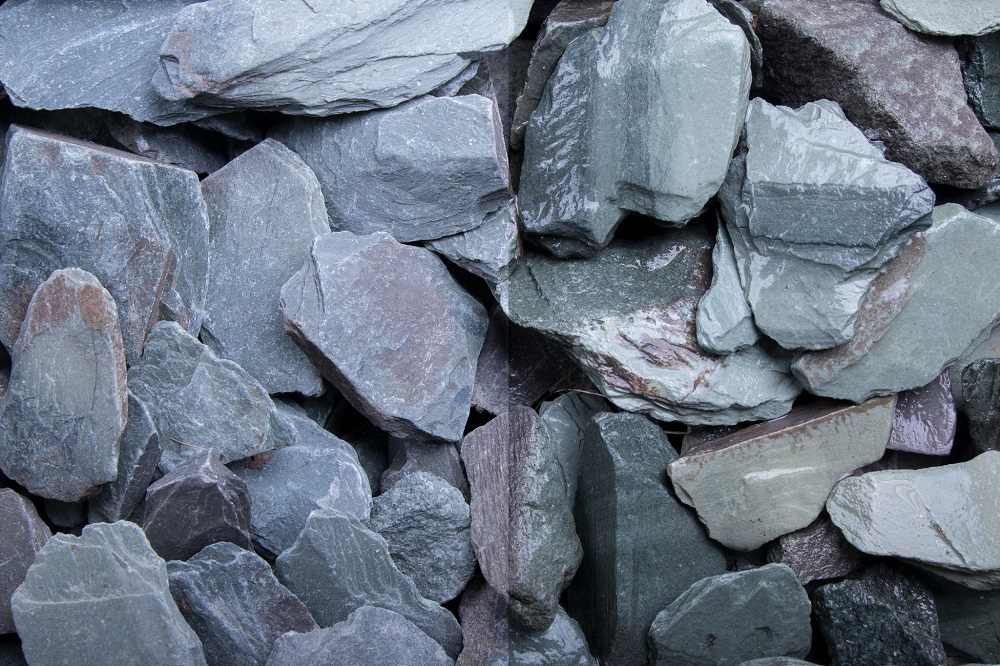


WHAT IS THE COLOR OF SLATE? The color of slate is determined by its mineral composition. This includes aluminum oxide, iron oxide, potassium oxide, magnesium oxide, sodium oxide, silicone dioxide, and titanium dioxide. Some compound mineral can also be found in slate. Apatite, graphite, kaolinite, magnetite, tourmaline, and feldspar are sometimes present as well, although less frequently. Some minerals like biotite, chlorite, hematite, and pyrite are also usually present in slate. It is mainly composed of quartz and muscovite or illite. WHAT IS THE COMPOSITION OF SLATE? Slate is derived from shale-type sedimentary rock of clay or volcanic ash that underwent low-grade regional metamorphism. This property makes slate more prone to breakage when subjected to freezing, hence they are less used as a roofing material. Brazilian slates, compared to the ones found in Spain, have higher water absorption indexes. Slate extraction in South America comes from the Minas Gerais in Brazil. Presently, several regions in Vermont, New York, and Pennsylvania have active slate quarries. The first commercial slate quarry was then opened in Peach Bottom Township, Pennsylvania in 1785. In North America, slate was first quarried in 1734 along the borders of Pennsylvania and Maryland, USA. The slate mines in the Llangollen area are known to produce a darker colored slate, making them almost black.

There is also a number of slate producing quarries in the Blaenau Ffestiniog area. Other essential slate producing mines in Wales include the Dinorwic Quarry, and Cilgwyn Quarry. The Penrhyn Quarry is now considered as the largest slate producing quarry in the world. By 1882, Wales has produced about 92% of Britain’s slates. Slate mining in North Wales began in 1782 with the Penrhyn Quarry near Bethesda in the Ogwen Valley. In this region of norther Spain, slates are believed to be formed during the Palaeozoic period hence are about 500 million years old. Slate production companies are located in Valdeorras in Ourense, and some others in Quiroga, Origueira, and Mondoñedo. The slate industry in Spain is the source of about 90% of slates used in Europe, the region of Galicia being the principal area of production. In the US, slates are found abundantly in Vermont, New York, Virginia, and Pennsylvania. Wales is also a major slate mining region. Other significant slate sources in Europe can be found in Portugal, Italy, Germany, and Brazil. Majority of the natural slates used in Europe for roofing is from the slate industry in Spain. Slate quarries are also found in Cornwall and in the Lake District. Slate mines are abundant in several cities in the world, including Wales in the United Kingdom, which is considered a major industry in the region.

The slate industry revolves around extraction and processing of slate for most of its uses such as roofing or flooring. Slate can be quarried in a slate quarry or tunneled in a slate mine. It is widely used as a roofing material because of its low water absorption index of less than 0.4%, making it resistant to frost damage and breakage secondary to freezing. It has also been popular in the use for billiard table tops, blackboards, tombstones, and commemorative tablets. It is widely used in building roofs and floors, for it being fireproof and a good electrical insulator. Slate arises from the repetitive layering or foliation of metamorphic rocks, particularly through the low-grade metamorphism of shale or mudstone. Metamorphic rocks are formed from the change in form of existing rocks, a process called metamorphism. WHAT IS SLATE? Slate is considered as the finest grained foliated metamorphic rock.


 0 kommentar(er)
0 kommentar(er)
